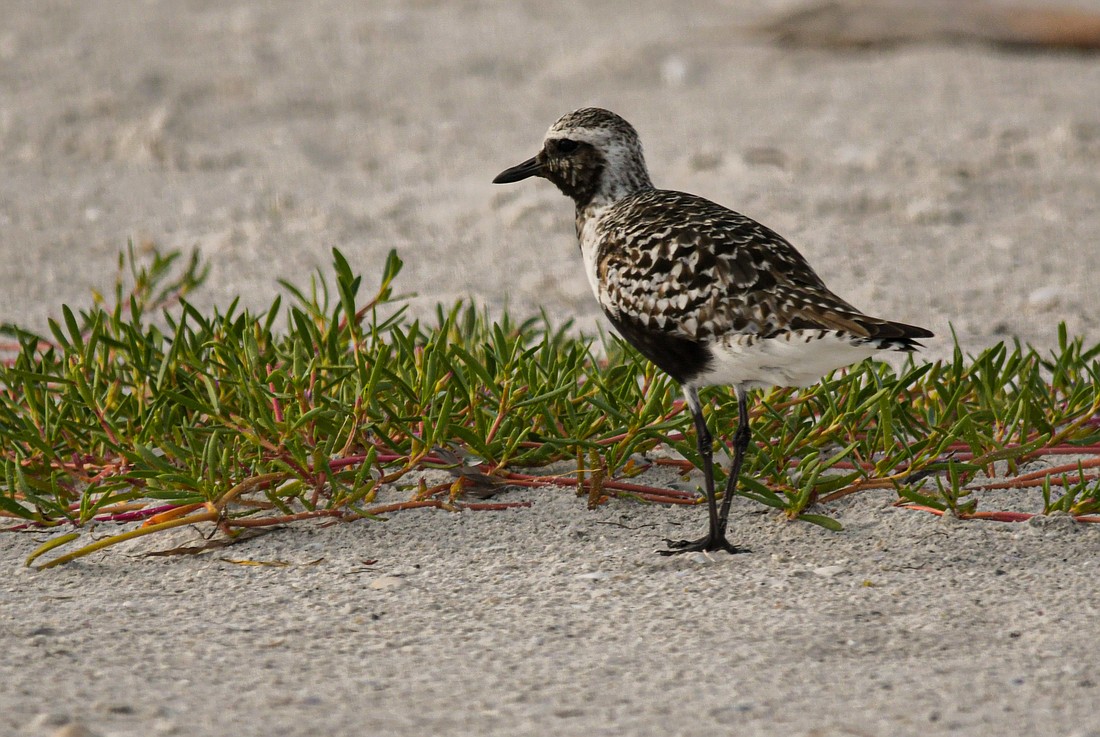- April 8, 2025
-
-
Loading

Loading

A somewhat plain bird most of the year, with a gray body and a whitish belly, black-bellied plovers are showstoppers during mating season. For these few months, they molt into bold colors; a contrasting mix of snow white and their namesake jet-black plumage.
Molting is the process of birds replacing their old feathers with new ones. Unlike hair and fingernails, that continually regenerate and grow, a feather is a complete structure and no longer grows once it reaches full size. A molt may be partial, replacing just some of a bird's feathers, which may have become worn with age or use, as feathers don't last forever.
And, for some birds, molting is part of a striking transformation that occurs before breeding season. After a winter in dull plumage, which keeps them nicely camouflaged, fresh, brightly colored feathers are part of many birds' preparation for attracting a mate. Indeed, studies have shown that many birds with brighter plumage have better breeding success.
Black-bellied plovers, the largest of the North American plovers, are migratory visitors to our shores, so their populations are highest during fall and winter, when the whistles and loud alarm calls of these cautious birds can frequently be heard.
Interestingly, it is thanks to their alert nature, as well as these loud calls, that their populations were not heavily affected by the feather trade in the late 1800s and early 1900s, which wiped out many other shorebird and wading bird populations. In the summer, most black-bellied plovers return to their breeding grounds in the Arctic tundra, traveling farther north than any other plover species.
Save our Seabirds is a non-profit organization whose mission is to rescue and rehabilitate sick and injured birds, releasing as many as they can, while educating our community about avoiding injuries and preserving habitats.